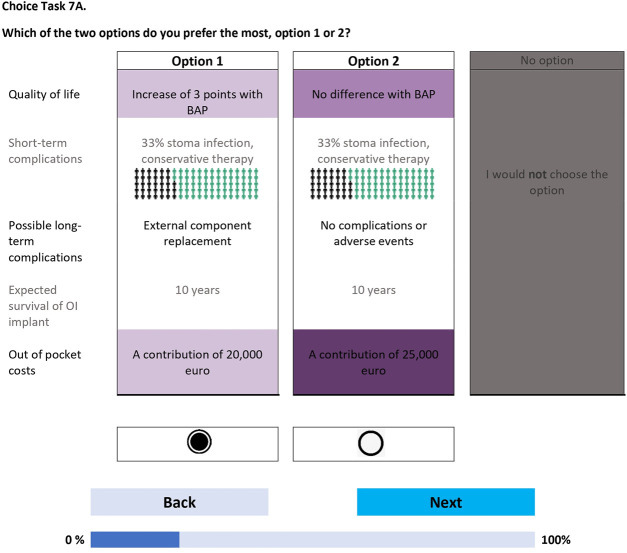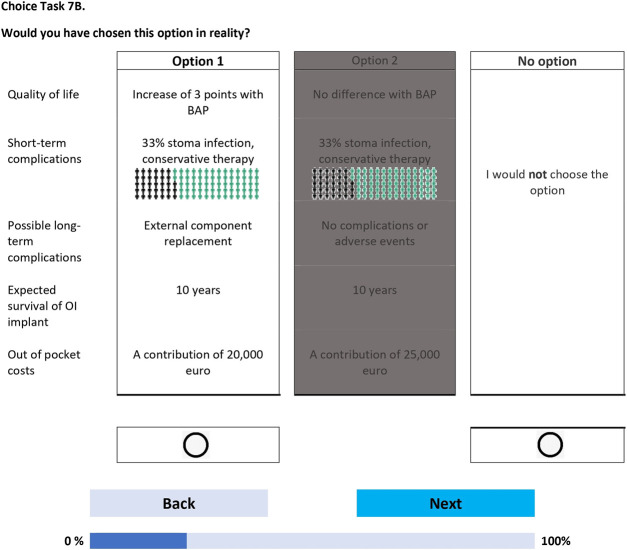Figs. 2-A and 2-B Example of a choice task question in the discrete choice experiment. BAP = bone-anchored prosthesis, and OI = osseointegrated. The figures are representative of 1 choice task set (Fig. 2-A) and the follow-up choice task in which the patient is asked whether they would prefer the previously chosen option versus the “no” option (i.e., no BAP treatment) (Fig 2-B). Characteristic levels that are equal (e.g., in Fig. 2-A, “Expected survival of OI Implant” and “10 years”) are grayed out, and higher-level orders of a characteristic (e.g., in Fig. 2-A, “A contribution of 25,000 euro” being a greater out-of-pocket cost than “A contribution of 20,000 euro”) are shown in a darker shade of purple. Coloring styles are used to reduce [cognitive] burden. The levels within each characteristic change from one choice task set to the next. Note that the choice task and follow-up choice task are displayed on consecutive pages.

An official website of the United States government
Here's how you know
Official websites use .gov
A
.gov website belongs to an official
government organization in the United States.
Secure .gov websites use HTTPS
A lock (
) or https:// means you've safely
connected to the .gov website. Share sensitive
information only on official, secure websites.

